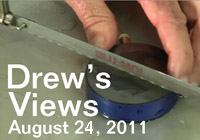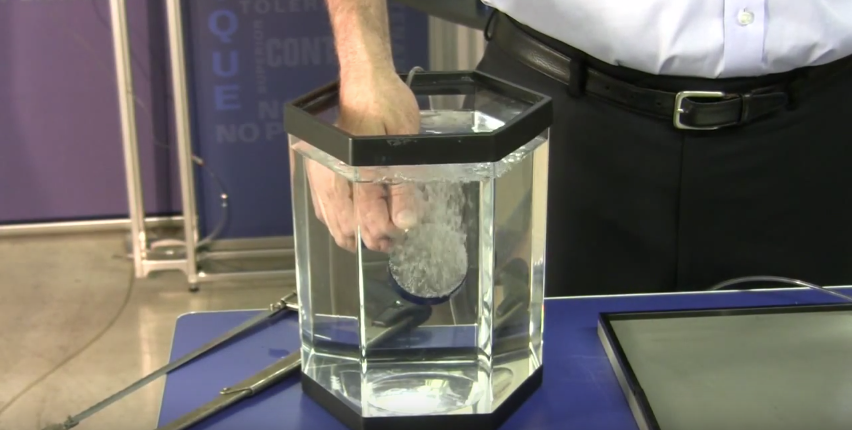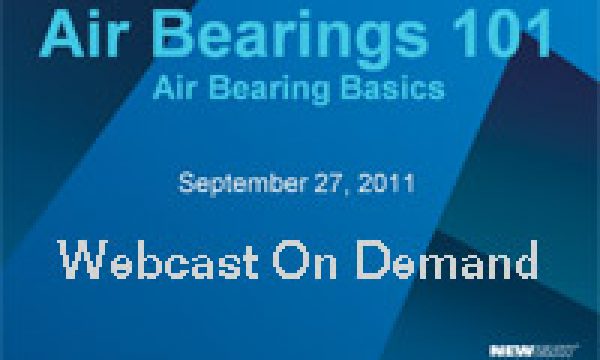 Welcome to the August 24, 2011 edition of Drew’s Views. This video blog post covers some Air Bearing Basics. We want to put these precision components into context for you. The best way to do so is to show you how they work in their natural environment. To see how these bearings compare, just expand this blog entry by clicking ‘Read More,’ and then click the play button.
Welcome to the August 24, 2011 edition of Drew’s Views. This video blog post covers some Air Bearing Basics. We want to put these precision components into context for you. The best way to do so is to show you how they work in their natural environment. To see how these bearings compare, just expand this blog entry by clicking ‘Read More,’ and then click the play button.
Air bearings are part of the Fluid Film family group of bearings, meaning they require some type of fluid to be the pressurized medium in the gap. This fluid can be water, oil, or…in the case of air bearings…air. This group is further sub-divided into dynamic and static bearings.
Aerostatic bearings require an external pressure source, so the air pressure is actually plumbed to them through a tube. The advantage to this is that the fly height is not dependent on motion, so even at zero velocity the fly height is the same as at 50m/sec.
There are a number of different ways to control the flow of air into the air gap of an aerostatic bearing. Some air manufacturers use orifices; some use step compensation; New Way concentrates on porous media compensation.
When you look at the surface of a New Way porous media air bearing with the naked eye, it doesn’t look like there are any features in it, but actually it has millions of submicron-sized pores evenly distributed across the entire bearing face. A quick way to demonstrate this is by placing a plumbed air bearing under water, where you will see how evenly the air distributes from the whole face of the bearing.
Now in contrast to porous media air bearings we have orifice air bearings. They come in different configurations, but a likely model might make use of three jeweled orifices connected by grooves. Unfortunately, if such a bearing becomes scratched, all of the air can escape, and then you don’t generate any pressure under the face of the bearing.
With the porous media air bearing though, you can literally take a hacksaw and score a deep groove right down the center, and it will still carry a very large percentage of its rated load. This is because air is still bleeding out of 95% of the surface area over the entire face of the bearing, and not just a few orifices.



